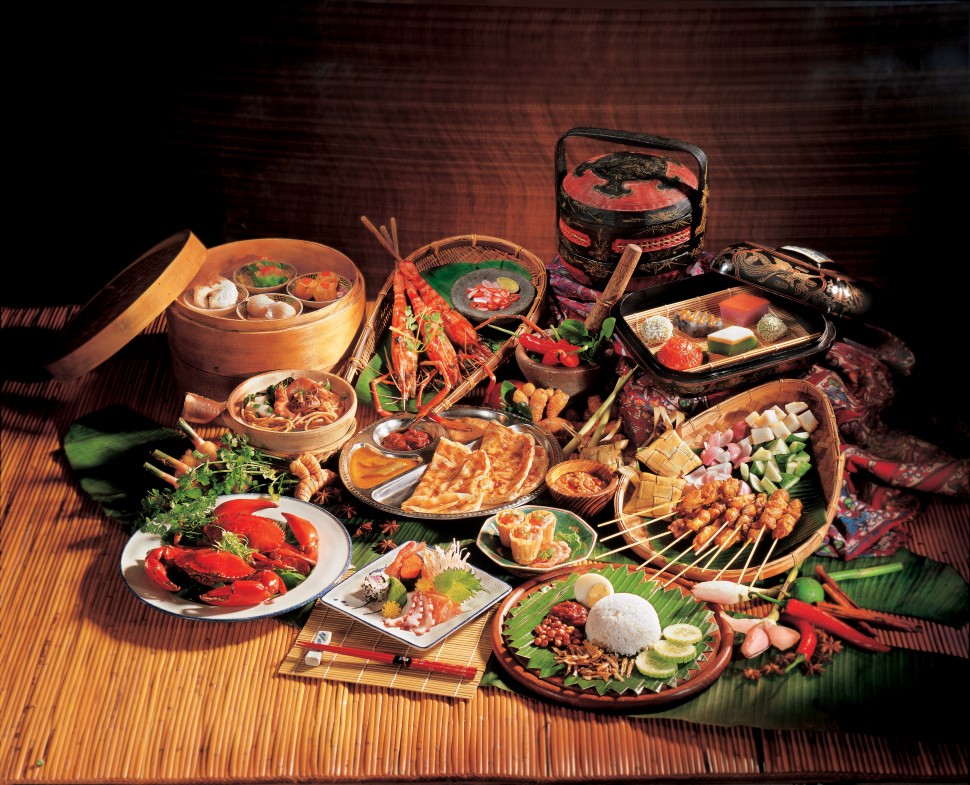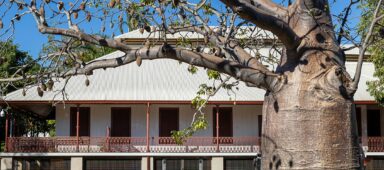From Perlis to Johor and across the sea to Sabah and Sarawak, we list must-try dishes according to state
It’s no secret that Malaysians love food. Eating is almost a national pastime – so much so that Malaysians might greet you with a ‘sudah makan?’ (have you eaten?) rather than a “How are you?” While we won’t say no to a good plate of nasi lemak and roti canai, there are plenty of Malaysian culinary gems waiting to be discovered in each of its states. It’s time for a cross-country food adventure!
1. Penang
Hawker delights abound in Penang, the ‘Street Food Capital of Malaysia’ – and there are arguably many ‘must-try’ dishes while visiting the state. If we were to pick one, however, it’d be the Char Kuey Teow – flat rice noodles with soy sauce, chilli, shrimp paste, bean sprouts, cockles and egg. A good plate of char kuey teow should have a fragrant, smoky aftertaste. This is called ‘wok hei’ (literally, breath from the wok), which can only be achieved by stir-frying over a huge fire, as it is believed to ‘seal’ the flavours in.
Also try: Assam Laksa (fish-based spicy noodle soup), Rojak (sweet, savoury and spicy salad of bean curd, dough fritters, cuttlefish, fruits and bean sprouts with shrimp paste and peanut sauce), Oh-Chien (fried egg and oyster omelette), Prawn Mee (shrimp noodles), Ais Kacang (shaved ice with condiments)

2. Melaka
Once a flourishing port and later a stronghold for the Portuguese, Dutch and British, Melaka has a rich history dating back hundreds of years, and unique cuisine to match – such as those from the Kristang community, a creole group with mixed Portuguese and local heritage (and to some extent, Dutch or British). A typical Portuguese-inspired dish popular in Melaka is Ikan Bakar (grilled fish), where different types of seafood such as sting ray are wrapped in an aluminium foil with spicy sauces and cooked over a charcoal fire.
Also try: Cendol (pandan flavoured jelly on a bed of shaved ice and palm sugar syrup), Hainanese chicken rice balls, satay celup (skewered meat sticks in peanut gravy), Nyonya cuisine
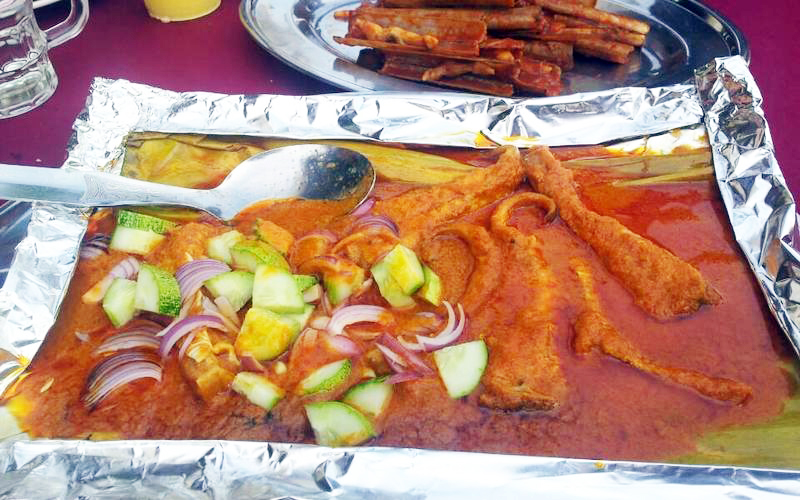
3. Johor
Inspired by the Middle-Eastern dish of foul medammas, Kacang Pool can be found in the southern state of Johor, particularly its capital, Johor Bahru. Warm and comforting, the mix of broad beans, minced meat, fried egg and red onions is like the Malaysian version of American chilli, but with a local touch of spice, such as black pepper, fennel seed and cumin. It is best eaten with a slice of toast bread for dipping.
Also try: Laksa Johor (laksa which uses spaghetti instead of regular yellow noodles), Otak-otak (minced fish or seafood paste grilled or steamed in banana leaf wrap), Mee Rebus (noodles in a nutty gravy), Asam Pedas (sour fish stew)

4. Perak
Perak’s state of Ipoh has a large Chinese demographic of Hakka and Cantonese descent, thanks to its history as a booming tin mining town. One of the city’s most famous dishes is the Nga Choy Gai, or steamed chicken with bean sprouts, dressed with soy sauce and sesame oil – deceptively simple, yet delicious. The bean sprouts are fat and extra crunchy, which locals have attributed to the crop being grown from fresh mountain water, from Ipoh’s many limestone hills.
Also try: Tau Fu Fah (soybean pudding), Gai See Hor Fun (flat glass noodles in chicken and shrimp broth), White Coffee (coffee with beans roasted in margarine), Caramel Custard Pudding, Nasi Ganja (rice with various curries)
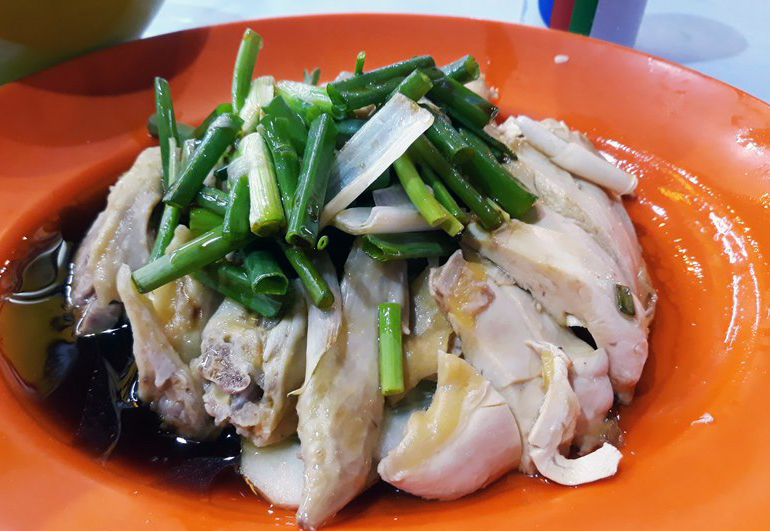
5. Sabah
Being largely surrounded by sea, it’s no surprise that seafood is Sabah’s forte. Kota Kinabalu, Sabah’s capital and largest city, boasts numerous eateries where the catch is as fresh as it gets. Tuck into fish, crabs, slipper lobsters, tiger prawns and squid prepared in a variety of styles, from flour battered and fried to sweet and sour, or accompanied by chilli and soy sauce. A popular spot to tuck into this scrumptious feast is at the Sinsuran Night Market, located behind the KK Handicraft Center.
Also try: latok (seaweed eaten raw with lime juice), Hinava (raw fish salad), Ngiu Chap Mee (beef noodles), and if you’re adventurous, Butod (sago worms)
6. Sarawak
Manok Pansoh is a traditional Iban delicacy of chicken stuffed into a hollowed out bamboo stalk together with various herbs and spices, such as tapioca leaves, chilli, lemongrass, galangal and ginger. The stalk is then cooked over a fire. The result? Tender, flavourful chicken, with the natural aromatic fragrance of bamboo. Sometimes, the chicken is substituted with meat, fish or seafood.
Also try: Sarawak Laksa, kolo mee (dry springy egg noodles served with barbecued meat), Sarawak layer cake, umai (raw fish salad)
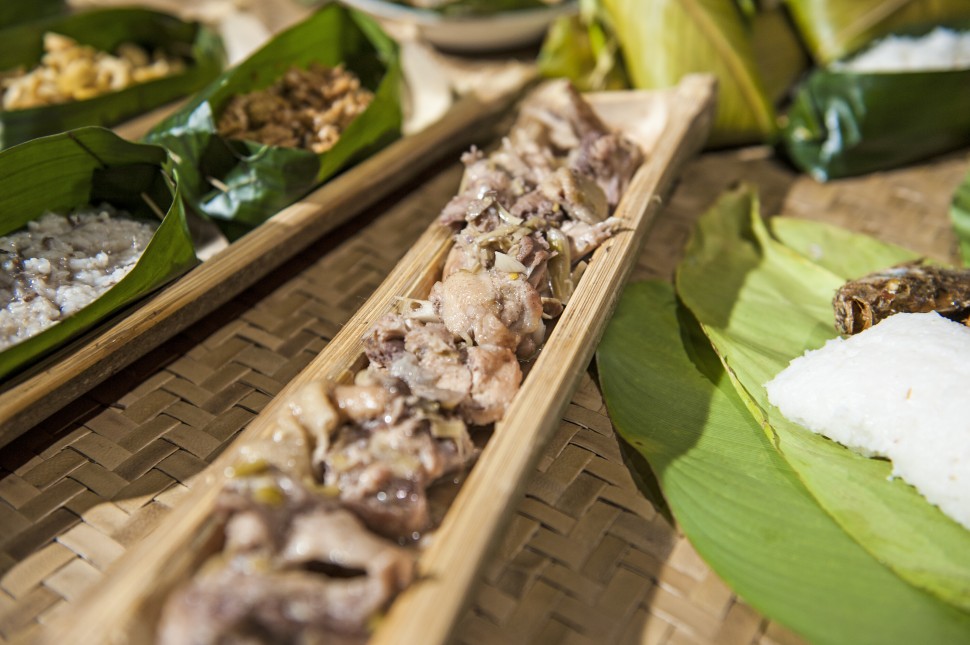
7. Terengganu
Almost every Malaysian has had this Terengganu snack at some point in their life – the Keropok Lekor, made from combining sago flour with pounded fish from mackerel and sardines. Rolled into a stick-like shape, these are then deep fried and served with hot chilli sauce: the perfect tea time snack. They are often sold at roadside stalls along the coast and in the cities. A variant of this is the Keropok Keping, which are thin, crispy sun-dried versions.
Also try: Budu (fermented anchovy sauce served as a condiment), Sata (fish cake and grated coconut wrapped in banana leaves), Bubu Lambut (herbed rice porridge), Nasi Dagang (coconut milk rice with curries)
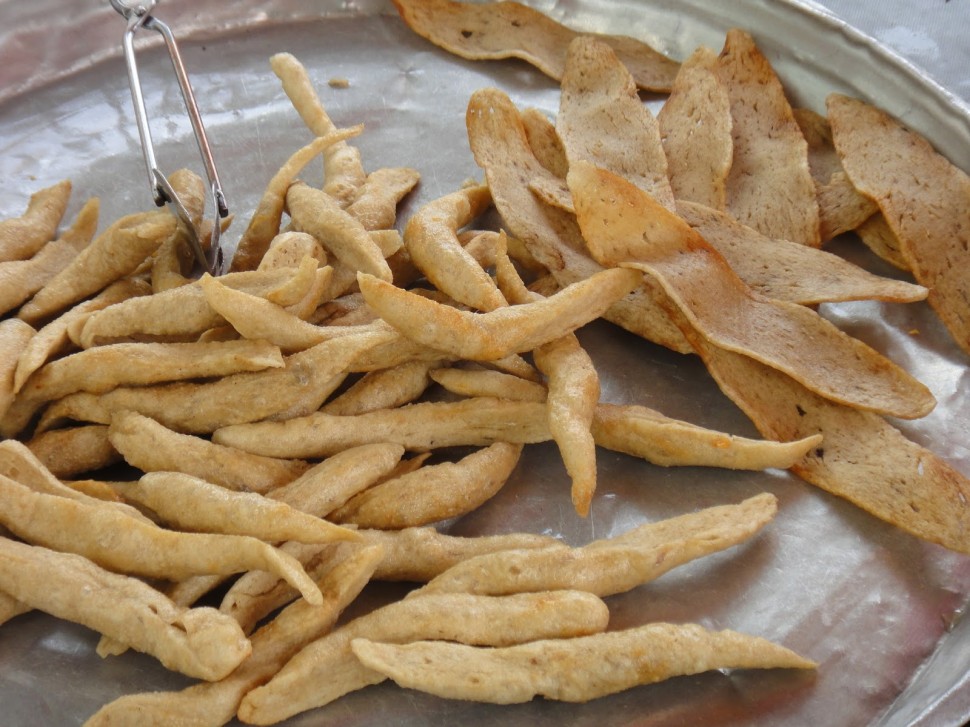
8. Kelantan
Nothing beats the warm, hearty comfort that is a plate of Nasi Kerabu, which is a staple dish in Kelantan. Its vivid blue coloured rice, made from extracting the natural dye from the butterfly pea flower, is as pleasing on the eye as it is on the palate, and is served with a side of fried breaded fish, solok lada (chillies stuffed with minced fish and grated coconut), crunchy keropok keping, salted egg, sambal and kerabu (salad). A must-have accompaniment is budu, the pungent fermented anchovy sauce which is also popular in neighbouring Terengganu.
Also try: Ayam Percik (roast spiced chicken), Akok Manis (a soft eggy pastry)

8. Pahang
Marrying two of the state’s most popular ingredients, Pahang’s signature dish features the ikan patin (freshwater silver catfish) cooked in fermented durian paste, to create the Gulai Tempoyak Ikan Patin. The pungent tempoyak gives the dish a unique flavour and aroma, whilst masking the strong muddy aftertaste of the patin. Like the stinky tofu, the gulai can sometimes be an acquired taste.
Also try: Pajeri Nanas (pineapple curry), Murtabak Mengkasar (pan-fried bread with minced meat filling), Jala mas puding diraja (banana and egg pudding with cherries, prunes and cashew nuts with a vanilla custard sauce)
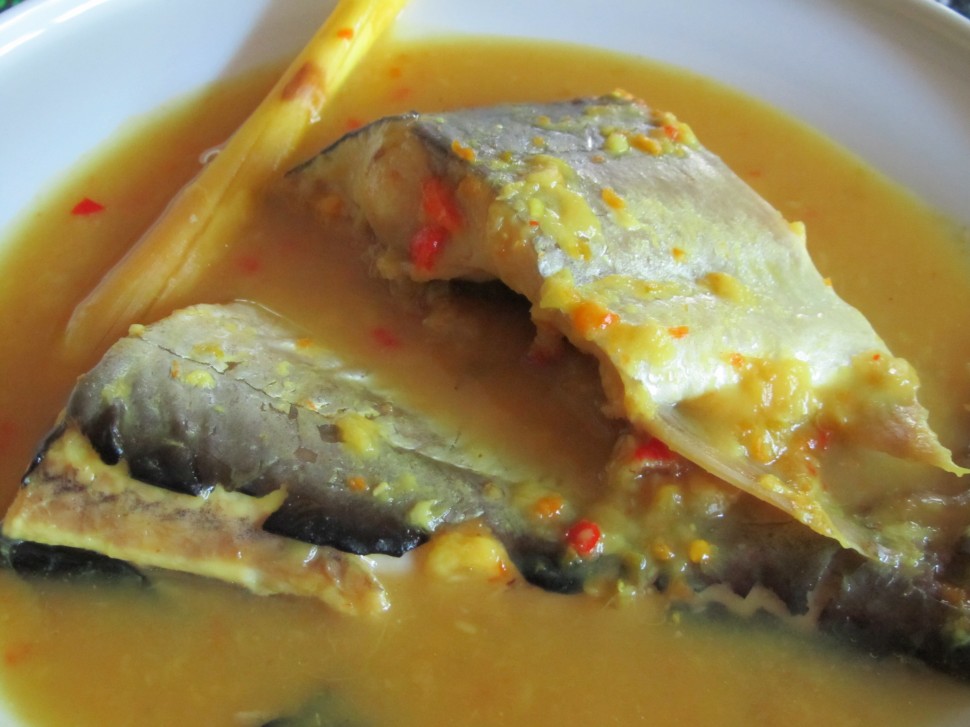
9. Kuala Lumpur
KL’s Curry Laksa didn’t make 2nd spot on Lonely Planet’s Top 10 Food Experiences for nothing. Uniquely Southeast Asian, its origins can be traced back to the Peranakan (Straits Chinese) culture, marrying Chinese noodles with Malay ingredients and spices. Rich and savoury, the coconut milk-based curry usually comes with tofu pok (beancurd puffs), crunchy bean sprouts, thin slices of fish cake and a serving of cockles to accompany noodles or vermicelli.
Also try: Nasi Lemak (fragrant rice cooked in coconut milk – also the country’s national dish!), Banana Leaf Rice, popiah (fresh spring roll) , Pan Mee (Hakka-style flat flour noodle)

10. Selangor
Being one of the major economic hubs of Malaysia, Selangor is the most densely populated state in the country, and the food is a reflection of this diversity. But ask any Selangor-ian where they’d take their out-of-town friends for food, and chances are they’ll head to Kajang, aka ‘Satay City’. Located some 20km from the Kuala Lumpur city center, the town is immensely popular for its skewered meat on sticks, cooked over an open fire on charcoal grills. Choose from chicken, beef or lamb (or all of them!), grilled to smokey, slightly charred perfection. It’s easy to polish off a dozen in one go.
Also try: Bak Kut Teh (literally pork bone soup; meat cooked in a herb-based broth), lontong (compressed rice cakes served in sweet and mild coconut-based curry or soup), pecal (salad with peanut sauce), tempe (fermented soybean cake)
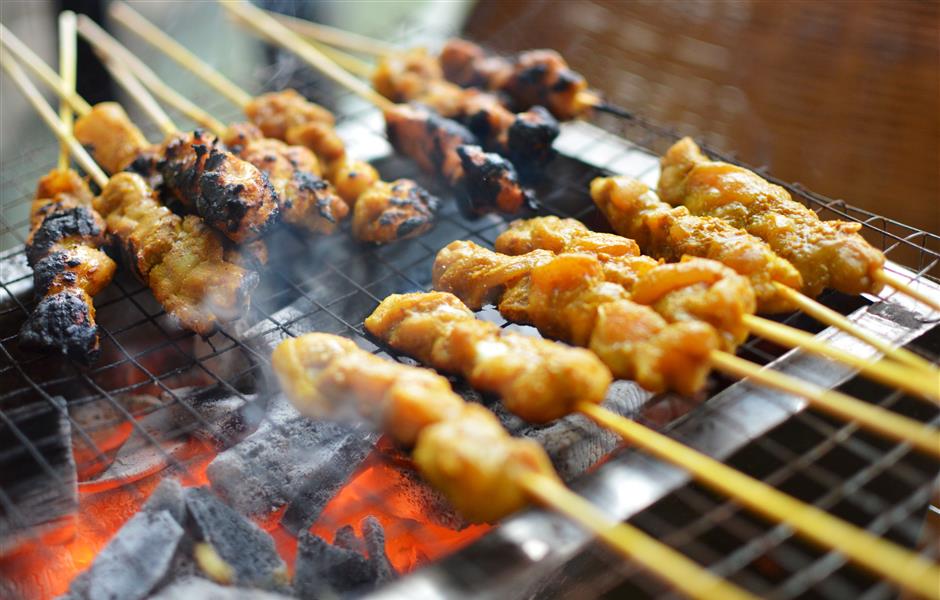
11. Negri Sembilan
The food of Negri Sembilan is influenced by its Minangkabau heritage (from the Minangkabau people of West Java, Indonesia) and marries strong, heavy flavours with liberal use of spices. One of the most popular methods of cooking is Masak Lemak Cili Padi, which can be used on fish, seafood, meat, chicken and/or vegetables. The paste is made from blending turmeric, ground bird’s eye chilli and coconut milk, which gives the dish a wonderful, creamy flavour that tastes heavenly with rice. Or as the locals would say it: Memang Sodap Tekau!
Also try: Sambal Tempoyak Daun Kayu (fermented durian sambal with shredded tapioca), Siew Bao (baked pork buns), Kerabu (spicy salad), Minangkabau style Rendang, Wajik (steamed glutinous rice cake)

12. Kedah
Laksa Utara (literally Northern laksa) is a blanket term for laksa dishes from the northern Malaysian states of Penang, Perlis and Kedah; but the latter has enough uniqueness to garner a reputation of its own. Laksa Kedah is ubiquitous in Kedah, served everywhere from high-end restaurants and hotels to street stalls. Similar to the Penang version, it features rice noodles in a thick stock made from mackerel or sardines, with a consistency closer to stew rather than soup.
Expect the fragrance of herbs such as daun kesum (polygonum) and tamarind, as well as coconut sambal, bird’s eye chillies, and prawn paste. To round it off, the dish is garnished with cucumber, onions and sliced boiled eggs. Don’t be surprised if you’re served the dish in a shallow glass plate instead of a bowl – that’s the true Kedah way.
Also try: Gulai nangka (jackfruit curry), sayur keladi (taro leaves cooked with chillies, onions, shrimp paste and various herbs), kuih karas (traditional kuih made from rice flour) and kuih bahulu (fluffy egg cake)
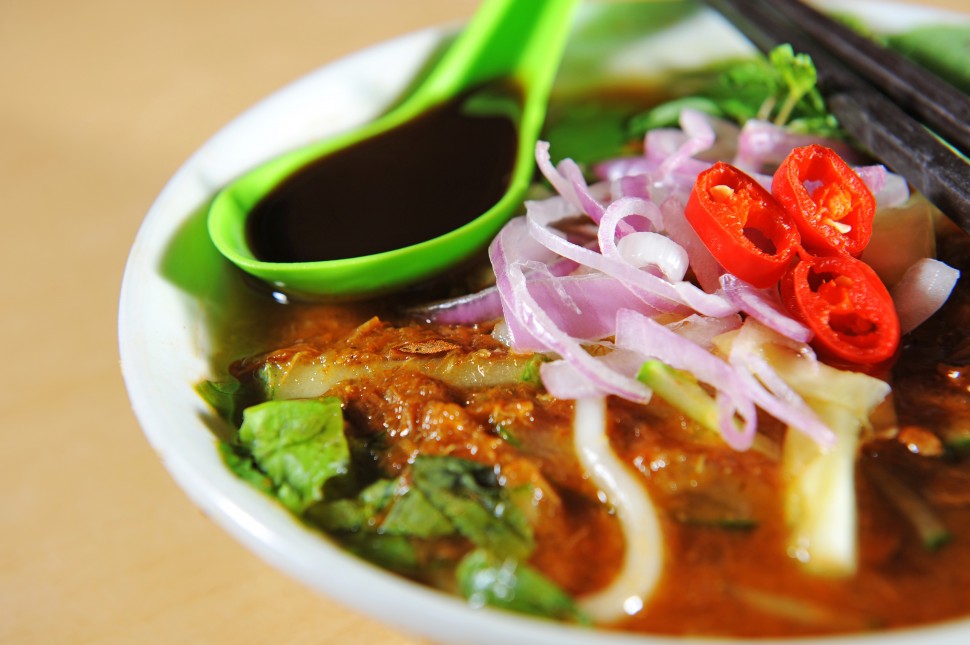
13. Perlis
Malaysia’s smallest state is big on culinary gems. Since it borders Thailand to the north, the food has strong Thai influences blended with local ingredients and cooking techniques. A dish not to be missed is the kurma daging Perlis. Commonly found at weddings and celebrations, the gravy is thicker compared to kurma dishes in other states and is cooked with larger chunks of beef. For the ultimate satisfaction, eat it with a side of nasi tomato (tomato rice), nasi biryani and acar (mixed pickled vegetables).
Also try: gulai rebung (spicy curry cooked with bamboo shoots), acar rebung (pickled vegetables and bamboo shoots), ikan keli goreng (fried catfish) and putu mayam goreng (fried rice flour cake).
Credits: Gulai Tempoyak Ikan Patin, Masak Lemak Cili Api, Keropok Lekor, Ikan Bakar
